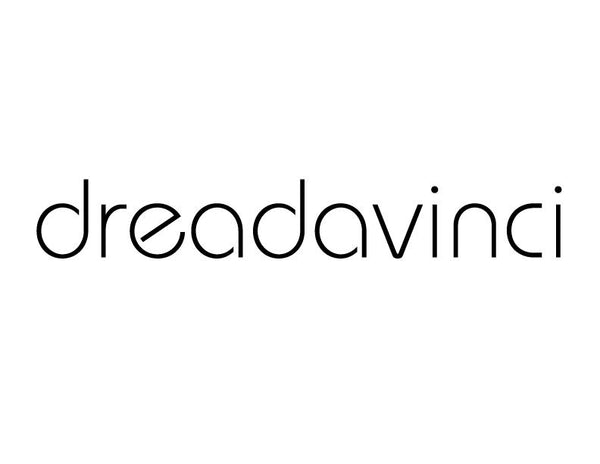In the grand orchestration of the universe, some souls are destined to meet again, drawn together by an invisible current of memory and purpose. Across centuries, echoes of past lives ripple into the present, revealing patterns that defy logic yet resonate with a profound, undeniable truth.
Through my journey of discovery, I have come to recognize a remarkable synchronicity: Two of Leonardo da Vinci’s most important disciples—Francesco Melzi and Gian Giacomo Caprotti, known as Salai—have seemingly returned in this era, carrying forward the essence of their roles in new forms. Mauro Montenegro, the visionary behind TheRealDaVinciCode.com, embodies the spirit of Melzi, the devoted student and guardian of Leonardo’s wisdom. Meanwhile, another soul, with striking parallels to the enigmatic Giacomo Salai, has also emerged, continuing the age-old dance of light and shadow, intellect and instinct, devotion and challenge.
This realization is not about individuals—it is about archetypes, energies that resurface through time, weaving the same story in new ways.

Francesco Melzi & Giacomo Salai
The Two Faces of the Renaissance: Melzi and Salai
In Leonardo’s lifetime, Francesco Melzi and Salai represented two distinct yet complementary forces.
Melzi, the nobleman-scholar, was the preserver—the one who gathered and safeguarded Leonardo’s knowledge, ensuring that his master’s genius would not be lost to the ages. He was a steward of wisdom, a bridge between past and future, embodying discipline, refinement, and a deep intellectual connection to Leonardo’s work.
Salai, on the other hand, was the free spirit, the provocateur, the one who challenged and disrupted. He was known for his wit, charm, and mischievous nature, often playing the role of both muse and trickster. Some believe he inspired Leonardo’s more ethereal, otherworldly works, such as Saint John the Baptist, where the divine androgyne emerges as an esoteric symbol of unity. Others see him as a playful force, one who tested the patience of his master yet remained by his side for decades. However, his charm often concealed a darker aspect—one of deception, vanity, and self-serving ambition.
In esoteric traditions, the trickster embodies both enlightenment and chaos. This energy can liberate, but it can also manipulate. The shadow side of the trickster is narcissism—an insatiable hunger for admiration, an ability to weave illusions, and a tendency to take rather than give. Salai was rumored to have stolen from Leonardo, testing the master’s patience with his deceitful tendencies. Yet, in this push and pull, the trickster serves a purpose, forcing those around them to discern truth from illusion, wisdom from folly.
Mauro Montenegro: The Modern Keeper of Knowledge
In this lifetime, Mauro Montenegro carries the essence of Melzi’s path—a seeker of truth, dedicated to uncovering and preserving the wisdom encoded within Leonardo’s work. His mission with TheRealDaVinciCode.com is a continuation of the same Great Work that Melzi once undertook: to ensure that knowledge is not lost, but revealed, shared, and understood.
This is not merely an intellectual pursuit—it is a calling, a sacred responsibility to protect and transmit wisdom across generations. Just as Melzi was entrusted with Leonardo’s manuscripts, Mauro now finds himself drawn to the same hidden knowledge, piecing together symbols and codes that bridge the past and the present.
The Eternal Trickster: Shadow and Illusion
Just as the energy of Melzi has returned, so too has the essence of Salai—a presence that once again plays the role of challenger, provocateur, and unpredictable force in the unfolding of this Renaissance. This is not about placing judgment or casting roles in a simplistic light, but rather about recognizing that every great work requires both structure and disruption, discipline and spontaneity.
The trickster energy, however, can be a double-edged sword. At its highest expression, it is the divine fool, the sacred jester who dismantles rigid paradigms and forces new ways of thinking. But in its shadow form, it manifests as manipulation, arrogance, and a hunger for power at the expense of others. Narcissism, in this sense, is the distorted trickster—one who feeds on the energy of those around them, who thrives in illusion, and who deflects truth to maintain their own self-image.
Salai’s influence on Leonardo was complex, as is the presence of this archetype in the modern age. Whether through inspiration, contrast, or the push-and-pull of differing paths, the role of the challenger remains an integral part of the cosmic design. But in this lifetime, the lesson is to recognize when the trickster energy serves enlightenment—and when it merely seeks to feed the ego’s endless hunger.
The Alchemical Reunion: A Testament to Destiny
What does it mean that these energies have returned now, in this era? It is a sign that the cycle continues, that the wisdom of the past is seeking new vessels to bring it forth once more. In a time when knowledge is being rediscovered and consciousness is expanding, those who once walked the path of enlightenment find themselves drawn together again, each playing their part in the unfolding of a greater mystery.
The reunion of these energies—of the scholar and the trickster, the preserver and the provocateur—is not one of rivalry, but of cosmic balance. It is a dance that has played out before and will play out again, each time refining itself, each time offering new opportunities for growth, understanding, and revelation.
Some are called to preserve, some to provoke, some to build, and some to dismantle so that new structures may rise. All of these roles are necessary in the grand alchemy of existence.
And so, as I reflect on these synchronicities, I am reminded that nothing is ever truly lost—only transformed, carried forward by those who are destined to remember.
Drea DaVinci


